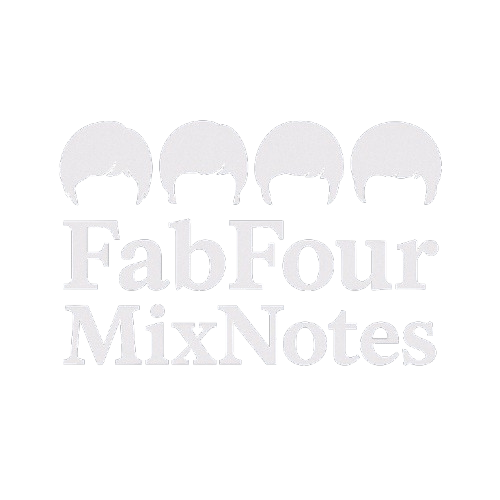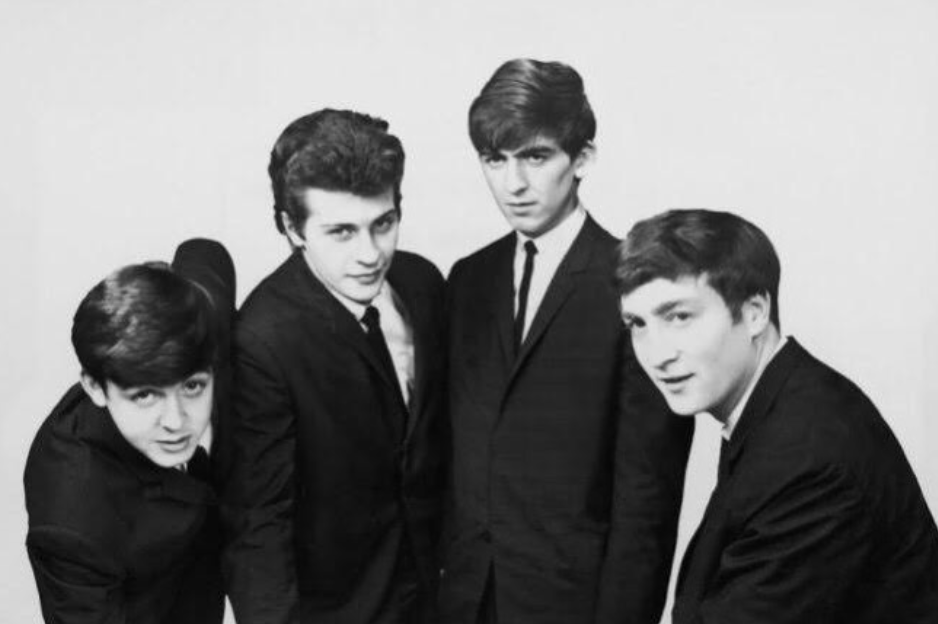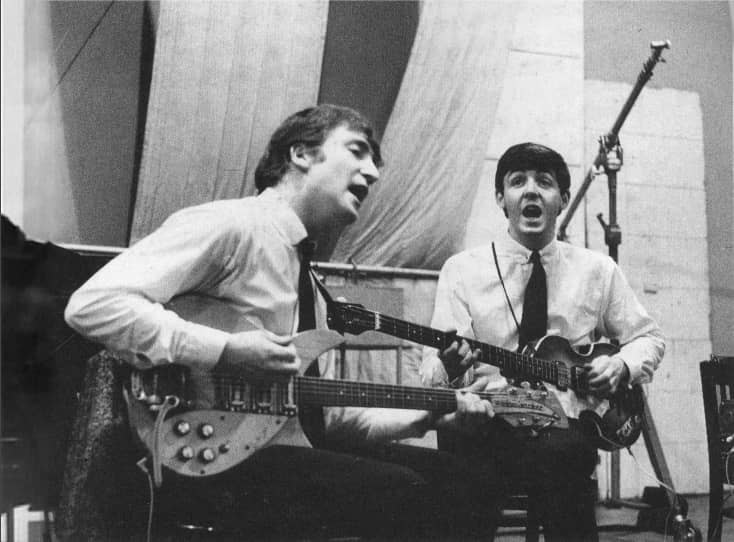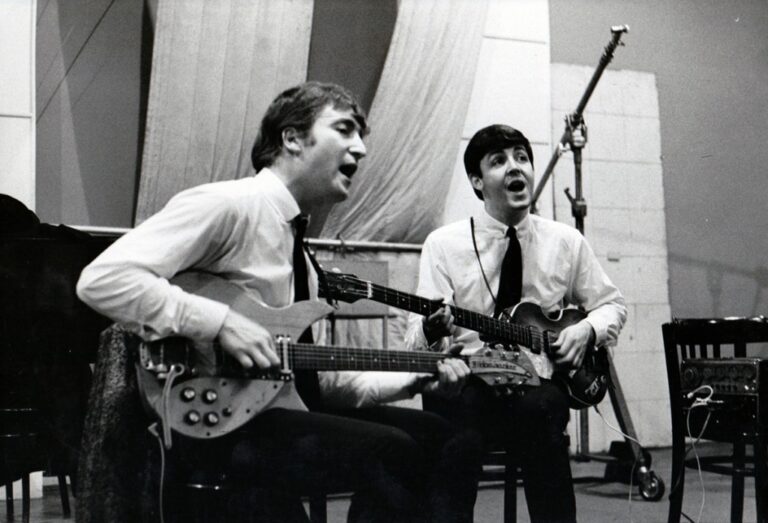Location and Time
EMI Studio 2
6.00 – 8.00pm
Songs
Bésame Mucho
Love Me Do
Ask Me Why
Personnel
John Lennon – guitar, vocals
Paul McCartney – bass, vocals
George Harrison – guitar
Pete Best – drummer
George Martin – Producer
Ron Richards – Assistant Producer
Norman Smith – Balance Engineer
Chris Neal – Tape Operator / Assistant Engineer
Instruments and Amplification
The following list is according to Jerry Hammack in The Beatles Recording Reference Manual: Volume 1, along with other sources listed below.
Format:
Year • Brand Model [Finish / Variant] — Type (Player) – Notes
Guitars
- 1957 Gretsch G6128 Duo Jet [Jet Black] – Electric Guitar (George Harrison)
- 1958 Rickenbacker 325 Capri with Bigsby B5 – Hallow-body electric guitar (John Lennon) 1
- 1961 Höfner 500/1 ‘Cavern’ [Sunburst] – Violin‑style Bass Guitar (Paul McCartney)
- 1962 Gretsch Chet Atkins Country Gentleman [Walnut] – Hallow-body Electric Guitar (George Harrison) 2
- Often alternated with his 1957 Duo Jet during late‑1962 sessions. It is disputed which guitar he had during this session.
Guitar Amplifiers
- 1960 Fender Deluxe ‘Narrow Panel’ 5E3 [Tweed] – 5 W Guitar Amplifier (John Lennon) 3
- c. 1960 Gibson GA-40T Les Paul, 16 W Electric Guitar Amplifier with Tremolo (George Harrison)
- 1962 JMI Vox AC30/6 Twin – 30 W Guitar Amplifier (John Lennon, George Harrison)
- Leak ‘Point One’ Preamplifier – Valve Hi-Fi Preamplifier (Paul McCartney) 4
- Leak TL/12 Plus Power Amp + Tannoy 15″ Dual‑Concentric Cabinet — 12 W Bass Amplifier (Paul McCartney) 5
- Temporarily pulled from the Echo Chamber One due to Paul’s noisy amp.
Studio Gear
This is the standard setup used in the 1962 to 1964 era, unless noted.
The following list is according to Jerry Hammack in The Beatles Recording Reference Manual: Volume 1, along with other sources listed below.
Control Room
- REDD.37 valve console
- BTR-2 mono tape machine
- BTR-3 twin-track tape machine
Available Gear
- EMI RS124 compressor
Microphones
- Neumann U 48 (vocals, electric guitar amplifiers, acoustic guitar, acoustic and electric keyboards)
- Neumann U 47/48 (vocals, electric guitar amplifiers, acoustic and electric keyboards)
- Neumann KM 54 (electric guitar amplifiers)
- STC 4038 (drum overhead)
- STC 4033-A (bass drum)
- STC 4033-A (bass guitar amplifier)
Signal Flow – 6 June 1962 Artist Test
Signal Path:
- Microphone (e.g., Neumann U47, STC 4038, AKG D19c)
- → Siemens V72 (Preamps inside REDD.37 Console)
- → REDD.37 Console (passive EQ and balancing)
- → Tape Machine: EMI BTR 2 (Mono recording)
- → Control Room Monitoring: Altec 605A Loudspeakers powered by Quad Amplifiers
Session Notes
Mixing Techniques
- P.S. I Love You was planned but not recorded.
Additional Notes
- The performance convinced Martin that the group had potential, paving the way for a formal Parlophone contract and establishing Abbey Road as their recording base.
- Martin’s dissatisfaction with Best’s drumming after this session set in motion the search that would bring Ringo Starr into the band later that summer.
- Tapes thought lost were partly recovered decades later, with two tracks surfacing on Anthology 1, giving us a glimpse of the moment the Beatles’ studio story truly began.
- According to George Martin, this session was in Studio Three, while the engineers agreed it was in Studio Two
- This was followed by their next studio appearance on 4 September 1962, where Ringo Starr joined for the first time. It would be the Starr version of Love Me Do that would be released as The Beatles first single.
Media
Sources
Books
All the Songs: The Story Behind Every Beatles Release (Jean Michel Guedson, Philippe Margotin)
The Beatles Recording Reference Manual: Volume 1 (Jerry Hammack)
The Beatles Recording Techniques (Jerry Hammack)
The Complete Beatles Recording Sessions (Mark Lewisohn)
Websites
- It is disputed if the Bigsby B5 vibrato was on Lennon’s Rickenbacker at this session. Lennon later modified his 325 by removing the Kauffman Vibrola for the Bigsby, along with installing the gold pick guard and Horner knobs.
All You Need to Know About John Lennon’s Favorite Rickenbacker Model (Guitar Player) ↩︎ - Instrument attribution disputed; Harrison was photographed with both the Duo Jet and Country Gentleman during 1962. ↩︎
- Loan gear supplied temporarily by EMI staff. ↩︎
- Loan gear supplied temporarily by EMI staff. ↩︎
- Loan gear supplied temporarily by EMI staff. ↩︎




